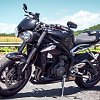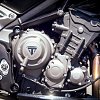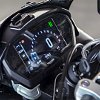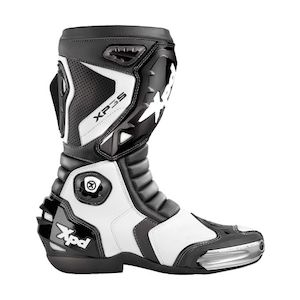The bike is perfect just the way it is, no reason to mess with success.
This was my initial thought regarding Triumph’s beloved Street Triple, upon reading of its planned bump in displacement for the 2018 model year.
When I was living in Tennessee, I had a 2010 Street Triple R in the garage for a few months and every time I rode I remember thinking, this bike makes me appear to be a better rider than I actually am. It was simply easy to ride. In my mind, the Street Triple has always been the perfect combination of comfort, handling, and power. As Lemmy puts it, “This is the Goldilocks bike in Triumph’s lineup.”

But time marches on, and on the 10th anniversary of the Street Triple’s inception, Triumph has decided to overhaul the line. Thanks to our local dealership, Triumph Philadelphia, I was able to spend time riding the S and the R versions of the Street Triple, in addition to long-term use of our RS press bike, to sort through the changes to the new bikes.
The engine
When Triumph introduced their 675 engine in the 2006 Daytona, it was seen as a revolutionary design. It delivered low- and mid-range power similar to what one could expect from a Ducati L-twin while still pulling hard up top, like an inline-four from one of the Big Four. When that engine was retuned for use in the Street Triple two years later, it received even more low- to mid-range power. The result was an engine with extremely progressive power delivery and a relatively flat torque curve that was a blast to ride.

As I mentioned in my article on the history of the Daytona, I think it’s very telling that Triumph has decided to release the new 765 engine in this bike and not the Daytona. The naked sport segment has increased in popularity to the point where the Street Triple is now the best-selling family of motorcycles in Triumph’s line. But the RS blurs the old lines between the Street Triple and the Daytona more than ever.
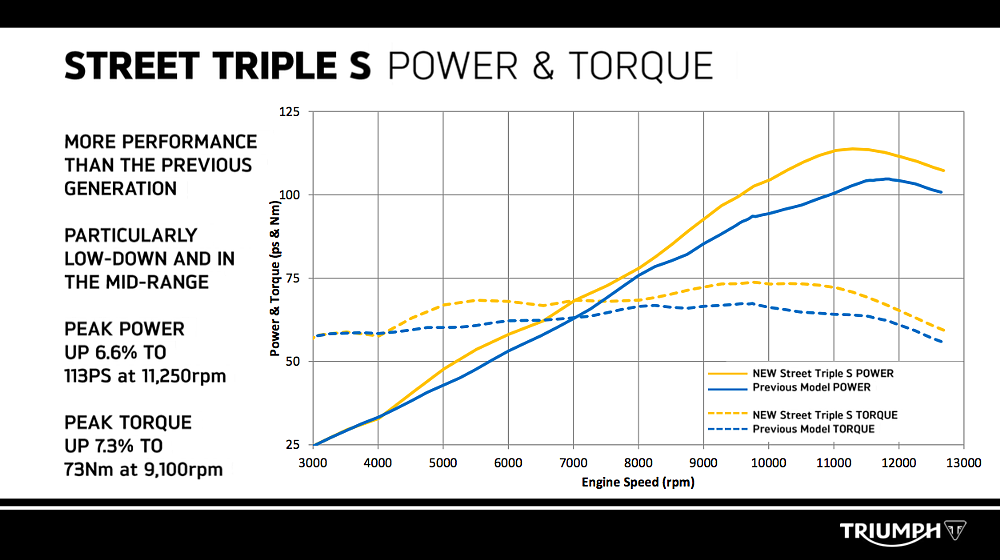
The new triple now carries three states of tune across the model range. Examining the dyno charts provided by Triumph, you’ll see the differences in how the three bikes deliver their power.
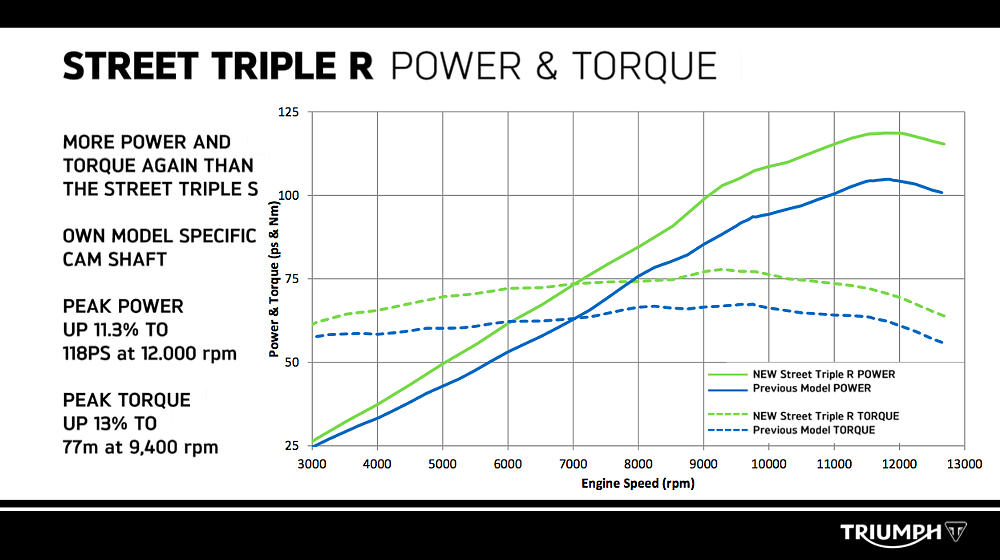
The S is tuned for a minimal bump over the previous 675 with a slightly fatter torque curve and a modest increase in peak power. The R receives the most balanced increase in both power and torque as it looks like Triumph just took the previous 675’s dyno results and shifted them evenly higher on the chart. The RS is clearly the most aggressively tuned of the three new bikes, as it sacrifices a bit of low- and mid-range power for increased power near the top end of the rpm range.
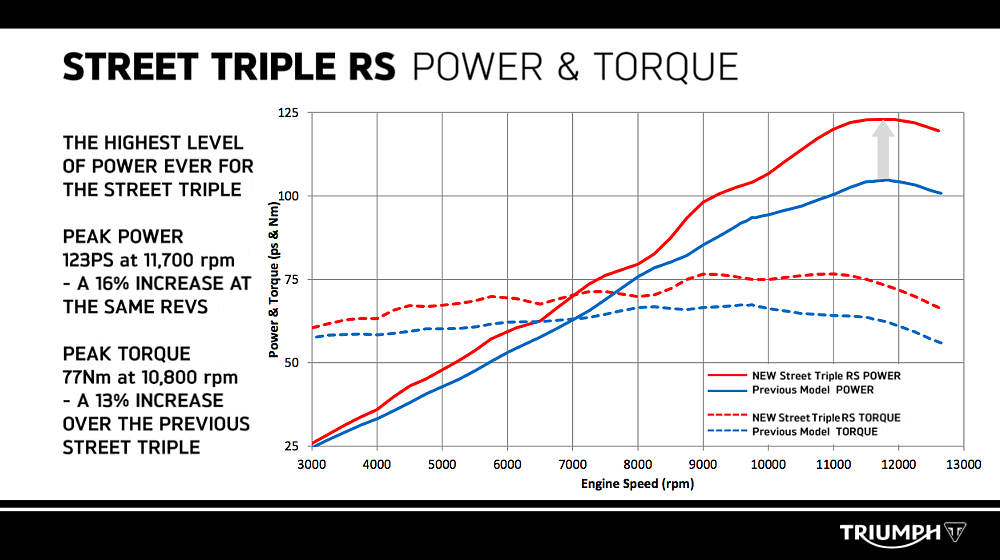
To help control that power, Triumph has introduced a new sophisticated electronics suite that includes ABS, traction control, and a ride-by-wire throttle with different throttle maps, all controlled by distinct rider modes. Each version of the Street Triple receives a different combination of the available aids. Phil Reed, Triumph’s Public Relations Manager, helped to break it all down.
The electronics
The RS is the only bike in the Street Triple family to come with all five rider modes: Rain, Road, Sport, Track, and Rider. Each rider mode controls the throttle response and the amount of intervention from ABS and traction control.
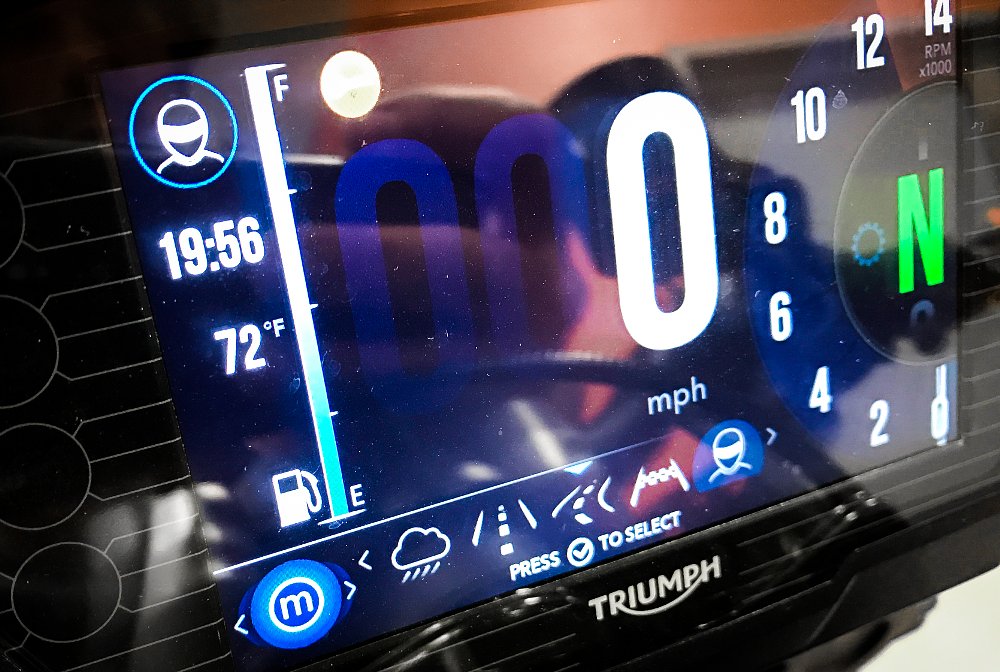
ABS will engage at three varying levels, Road, Track, and off. Traction control has five settings, Rain, Road, Sport, Track and off. While Sport mode is available on the R and the RS, Track mode for both ABS and traction control is only available on the RS.
In Rain and Road modes, there is a cap in first and second-gear power to help control rear-wheel slip before traction control even has a chance to kick in. When it does engage, it will do so immediately in Rain mode, working to completely limit rear-wheel slip or front-wheel lift. Road mode allows a limited amount of both. Throttle response is a bit softer in Rain mode and I found Road mode to offer the smoothest transition of power when starting from a stop. Rain and Road modes are the only two modes available on the S model.
Sport mode places no cap on the performance of the engine in the first two gears. It relies on the rider’s right hand to regulate throttle control with ABS and traction control kicking in if things start heading south. Throttle response in Sport mode is abrupt and comes on strong. It was a bit much during the city commute and in stop-and-go traffic and is only necessary if you find yourself on an open country road or a race track.
While Sport mode is available on the R and the RS model, Track mode is exclusive to the RS. It changes the way ABS and traction control engage. In Track mode, ABS will allow for rear-wheel lift under heavy braking, as well as more chatter before kicking in. Traction control will allow for front-wheel lift (i.e. wheelies) and rear-wheel spin. There is also a Rider mode available on the R and the RS, which allows riders to customize their own combination of electronic aids.

On the S model, the Mode switch on the left handlebar control allows you to toggle between rider modes, while the R and the RS get the updated TFT dash. It allows riders to control the electronics package using a joystick control on the left handlebar and the display on the dash. The TFT dash is easily one of the most noticeable features on these new bikes and I can see riders opting for the bump to the R over the S for this alone. It can be customized to display the bike’s information in a variety of ways.
The RS
Unlike the old Street Triple Rx, which provided mainly aesthetic changes to the R, the RS provides a clear bump in performance. That’s not to say the aesthetic bump isn’t there. It gets a dose of style in the form of a color-matched belly pan and pillion cover, as well as the bar-end mirrors, that will distinguish this bike from its peers at a 20-foot glance. Once in the saddle, the rider finds that the RS distinguishes itself as a specifically designed weapon for folks looking for maximum performance from a middleweight naked.

The RS gets “more” of everything: brakes, suspension, electronics, style, and tires are all different on the RS. This is a recipe we’ve previously seen from OEMs, including Triumph, on larger bikes, but it’s the first time we’ve seen this trickle down to the middleweight class of naked sport bikes.
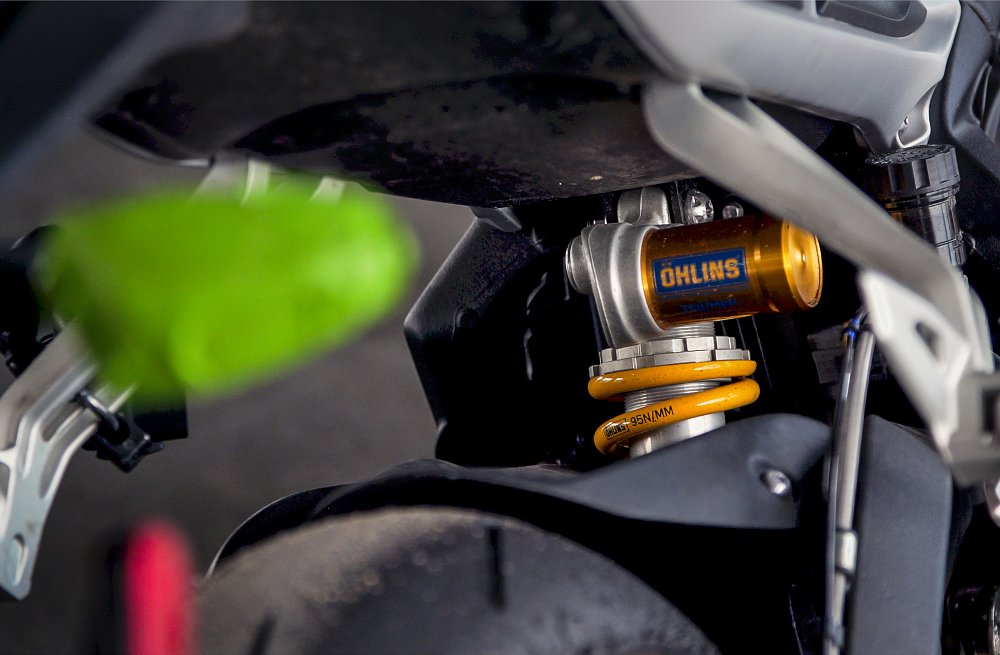
In addition to the changes to engine tune and the more sophisticated electronics package, the RS also gets updated hardware. The RS features a Showa Big Piston Fork and an Öhlins STX40 piggyback reservoir shock. The suspension is completely adjustable front and rear for preload, compression and rebound damping.
The RS receives Brembo M50 Monoblock calipers up front, which are controlled by a Brembo MCS span- and ratio-adjustable lever. This allows the rider to adjust both the throw of the lever and also brake feel by altering the brake lever pivot distance to 19, 20 or 21 mm. The bottom line is that these brakes, in addition to their massive stopping power, provide arguably the best feel and feedback at the lever of any bike I’ve ever ridden.
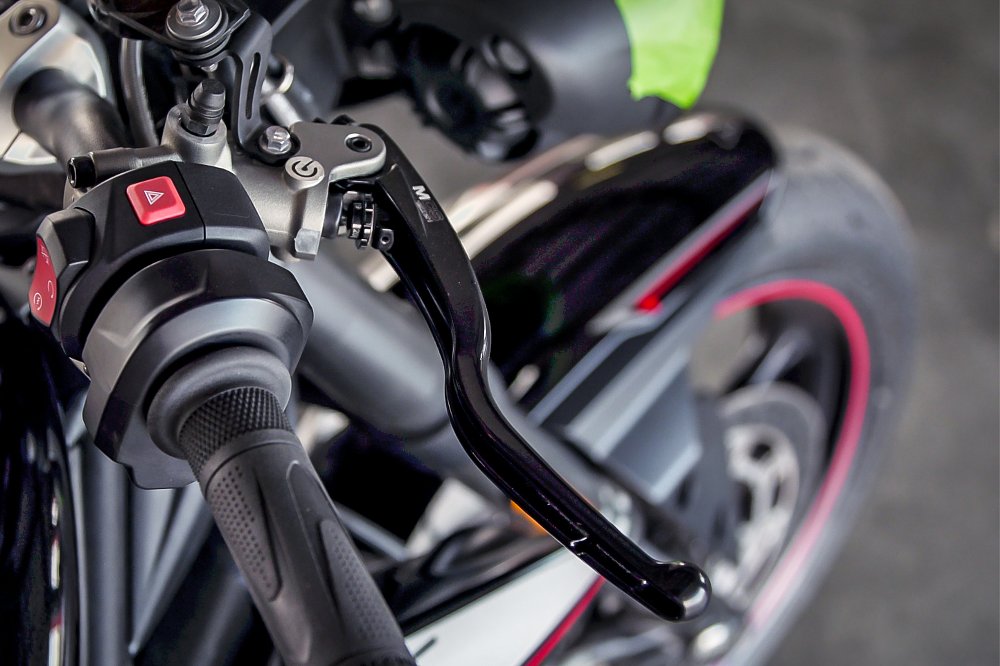
In addition to the slipper-assist cutch that is found on both the R and RS, the RS gets a quick shifter that allows for seamless upshifts. It also gets a set of Pirelli Diablo Supercorsa SP tires, an upgrade over the stock Diablo Rosso Corsas. These proved to be awesomely sticky tires and worked great on both the street and the track.
Riding the RS
My maiden voyage on the Street Triple RS was a rocky one. I rode it the long way home through the streets of Philly and I was at odds with the bike. It felt like a caged lion pawing at the limits of its enclosure. The suspension transmitted every nook and cranny of the abused Philly blacktop to my spine. The throttle was choppy and I really had to crank the throttle to launch from first gear. The latter improved drastically once I replaced the baffle that had been removed from the aftermarket Arrow exhaust, but starting from a stop in first gear still requires a good deal of throttle.
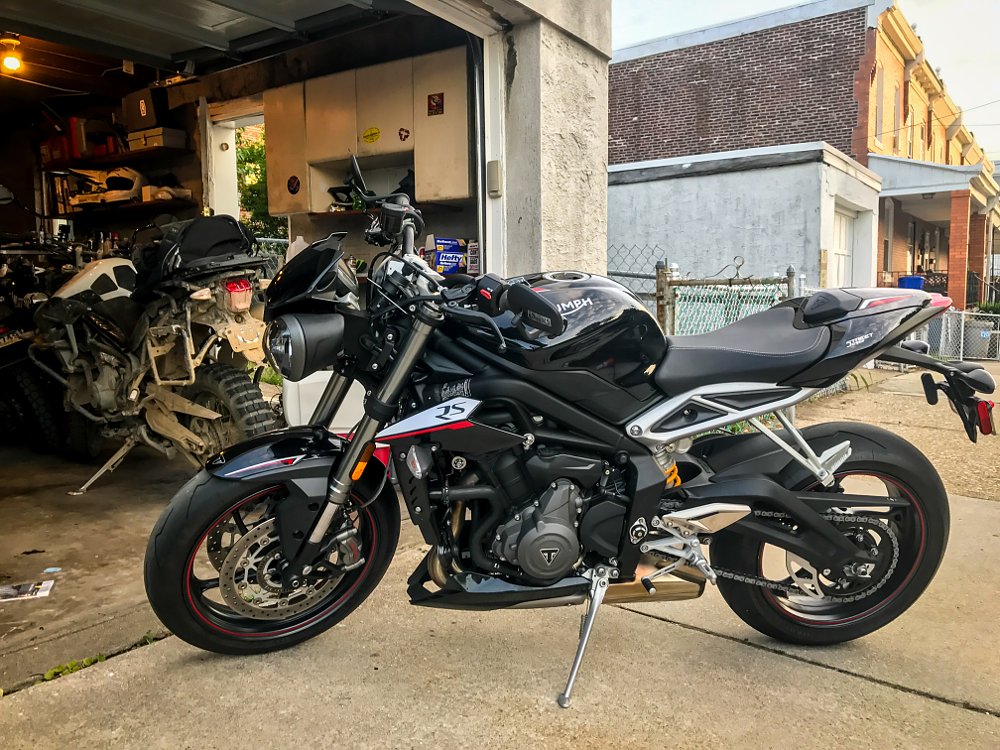
Other than the ride home to my garage my first real seat time with the bike came in the form of a rainy track day at New Jersey Motorsports Park. I spent the day turning laps on the shorter Lightning course with some fellow Zillans. AJ and Mr. McHugh were on a 2015 Street Triple R and a 2016 Street Triple Rx, respectively, Buzzsaw was on a Daytona 675 and Dan had just traded his 2015 Rx. The RS fit in just fine with this motley crew.
Chatting with these guys about the track performance of the older Street Triples, it seemed a common complaint was the lack of top-end power, something Triumph remedied with the RS. While still providing meatier mid-range power than the old engine, this bike really wakes up over 8,000 rpm, pulling hard to the redline just shy of 13,000 rpm.

Wet conditions were ideal for testing the new electronics. There was a large puddle between turns three and four that claimed a few bikes throughout the day. With rain mode engaged, the RS would evenly slide about six to eight inches before straightening itself out. Even so, it took me a few laps before I was able to begin to trust the electronics as visions of totaling a press bike kept me humble.
In Road mode, ABS pulsed under heavy braking, a sensation that disappeared in Track mode. While there is enough stopping power from the front brakes to launch you over the handlebar, the rear brake is there more for looks and to pass DOT standards.
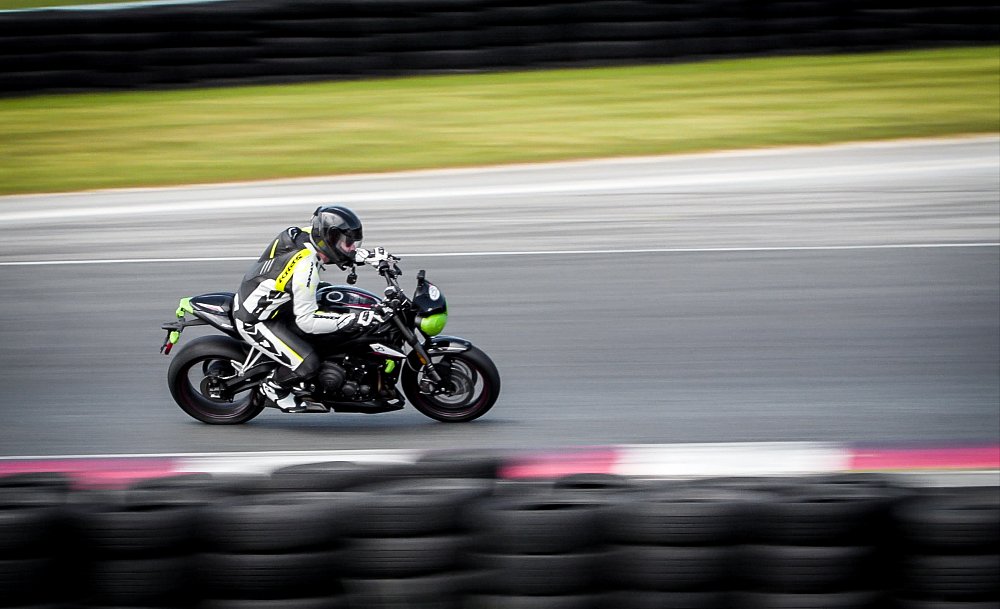
Returning to NJMP for filming at a Team Promotion track day event, I got to ride the Thunderbolt course under dry conditions. The Supercorsa SPs heated up fast with no help from tire warmers and impressed me with how much grip and feel they provide. The Dunlop Q3 has pretty much been my go-to recommendation for on- and off-track rubber, but the Pirellis might just change that.
The traction control kicked in coming off a rise on the back straight but after switching to track mode the front wheel easily floated up under acceleration before gently returning to the ground in time to execute the next corner. Cornering was made easy by one of the most competent stock chassis set ups I’ve ever ridden. I’m not talented enough to tell you whether it’s the frame or suspension that deserves the majority of the credit but together they work flawlessly. Whereas that Showa and Öhlins set up proved to be a bit of a spinebuster on the street, it allowed for this bike to handle as if on rails on the race rack.
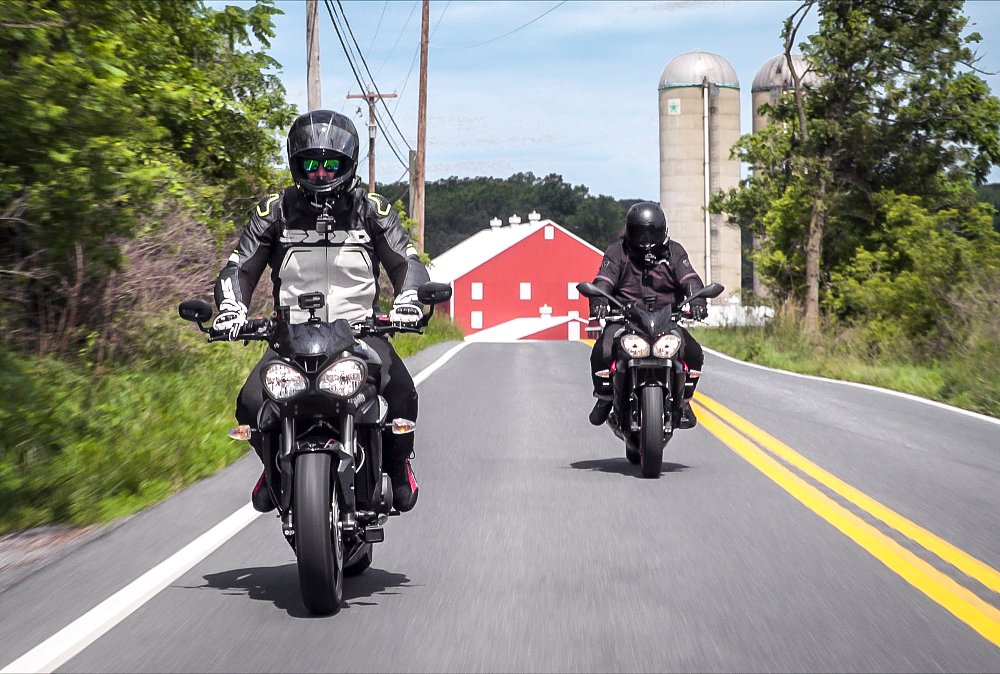
Getting off the track I spent the following weekend ripping around some of the back roads near Lemmy mountain. My biggest critique of the RS is that it’s almost overkill on the street. The brakes, suspension, engine and extra electronics are almost too much to even utilize. On the winding back roads of the Pennsylvania countryside, I was flagrantly breaking posted speed limits before I could even get the bike out of second gear.
The RS begs you to go faster. It longs for it. It has definitely got more mid-range performance than a typical inline four or even the Daytona, but it still begs you to chase the redline.
Riding the S and the R
Even though I only got about 10 miles each on the S and the R back to back, it was extremely helpful in understanding the positioning of these bikes compared to the RS.
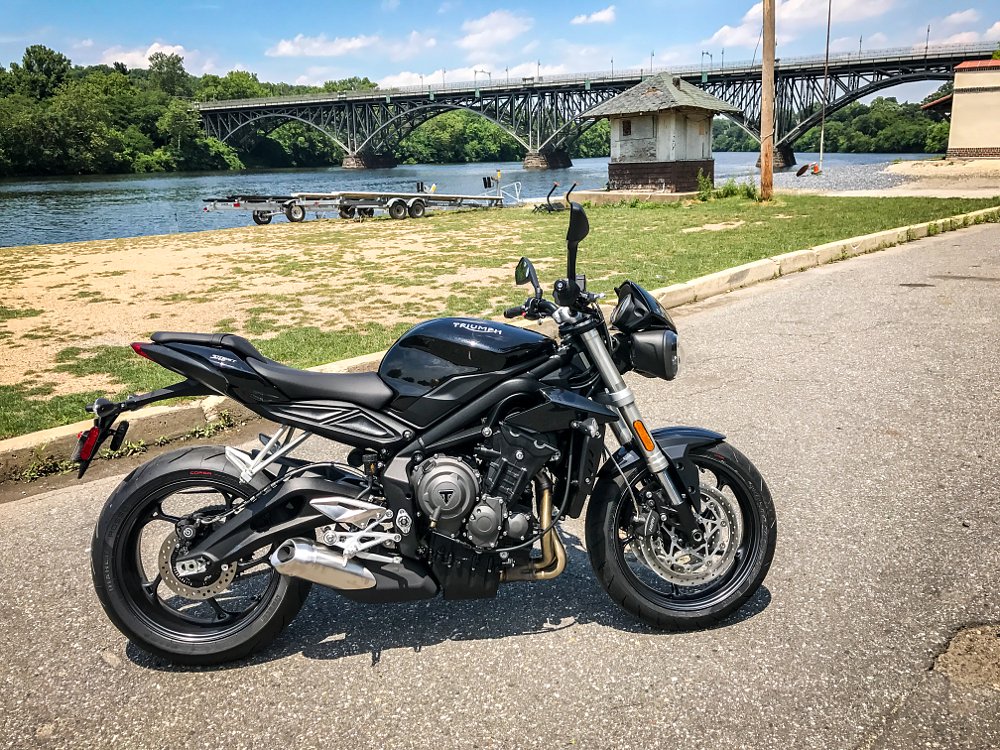
The S is a comfortable bike with more than enough sport performance for folks looking for a fun street bike. It still includes ABS and traction control, but without the sophisticated forms of adjusting the levels of interaction. The suspension was the biggest weak point of this bike for those looking for a performance-oriented machine but it was better at absorbing the everyday conditions of the street. The kickstand on this bike is the only one of the three to include a tab for your boot, which I know doesn’t sound like much, but it made it so much easier to use than the kickstands on the R or the RS.
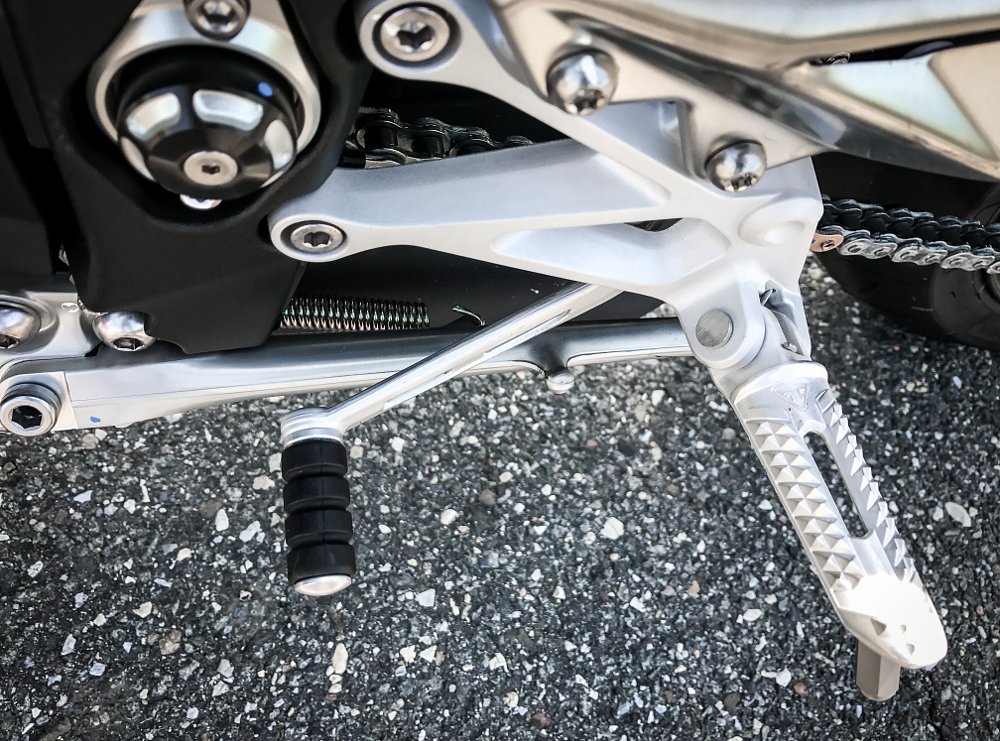
With the addition of nicer switch gear, a TFT dash, and higher-end components, the R has an air of superiority over the S. The engine tune was great on the street, offering solid mid-range bite and pulling hard from around 6,000 rpm. The suspension wasn’t as harsh as that of the RS while providing better performance than the S. It would work just fine for the occasional track day while being more comfortable for regular street use.
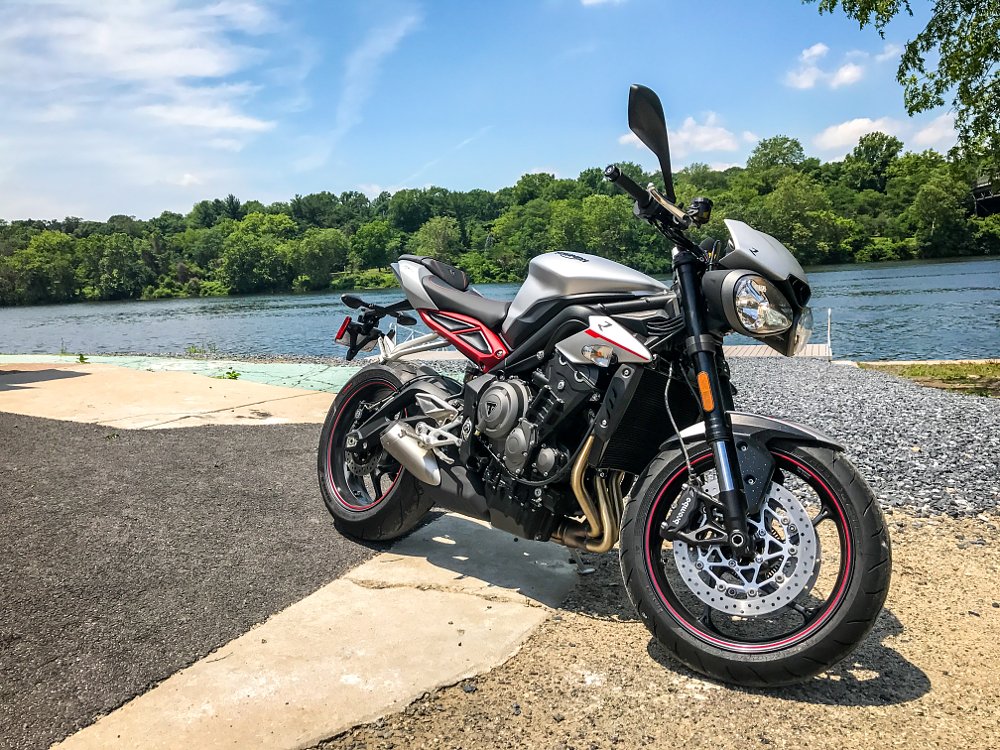
The brakes on the R were a surprising let down. While the Brembo monobloc calipers and radial master cylinder are less sophisticated than those on the RS, they should provide more than enough stopping power. However, they have no predictability to their feel whatsoever. The initial lever pull comes back halfway to the bar before engagement and engagement is very abrupt. It almost felt as if I were pumping the pistons back into place after a bleed. Personally I’d prefer the Nissin brakes on the S model to those found on the R but I’d take the brakes on the RS over pretty much any other set up out there.
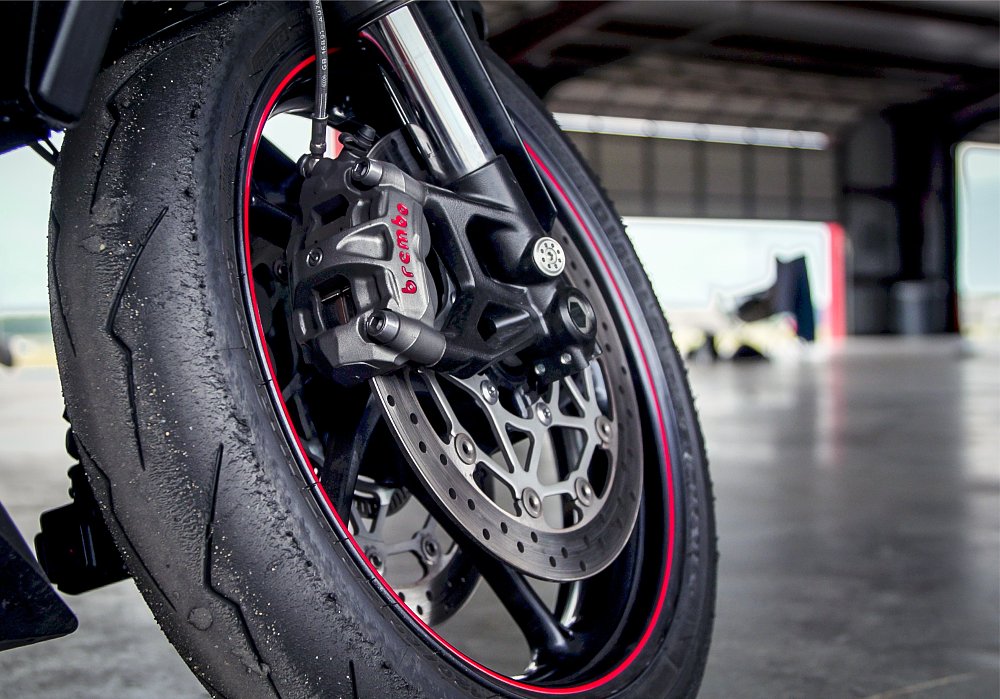
While Lem and I normally offer up mods we’d consider making if we were to buy the bike we are testing, it seems in this case Triumph has done that for you. They do a good job at differentiating models within in their lines thus allowing riders to chose the experience that best suits their needs. If you opt for the RS, all that’s left to add is possibly some more aggressive rear sets, frame sliders, and some tank grip tape for regular track use.
Conclusion
While the Street Triple line has clearly received a ground-up overhaul, the RS is an all-new machine unto itself. It’s a standalone in its class. What do you compare it to?
A Yamaha FZ-09? That’s not fair. With an MSRP of $12,500, it costs an additional $3,500 and is aimed at a different rider. Whereas the Street Triple line has traditionally been aimed at the street rider looking for a fun but street-oriented machine, much like the rider considering the FZ-09, the RS is focused on the enthusiast who wants more.
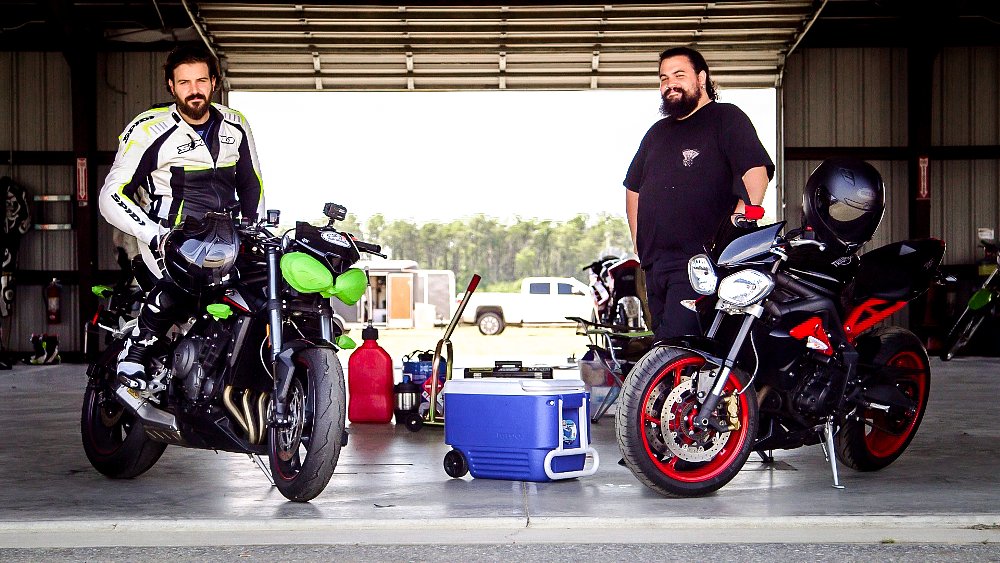
It’s for the guy or gal who wants a dedicated track bike but can’t afford it or justify the cost and upkeep of two machines. While I would opt for the RS for just that reason, Lemmy seems to think it is too large a departure from the original intent of the Street Triple line. While the Street Triple RS is definitely focused on performance, riding it back to back with the Daytona on the street, I can tell you it wins hands down from a usability standpoint. Its riding position, performance, and handling are all much more conducive to street use than a race replica sport bike, and that delivers on the original goal of the Street Triple line.
The addition of the RS means that riders need to be honest with themselves about their intended use of the bike. In American society, so often we take the attitude that if some is good than more must be better, and that’s not the case here. If your intended use is to stick primarily to the streets, then you’ll probably find either the S or the R more enjoyable for everyday use. However, if you’re looking for an out-of-the-box track weapon that is still comfortable enough to use on the street, the RS has your name all over it.






